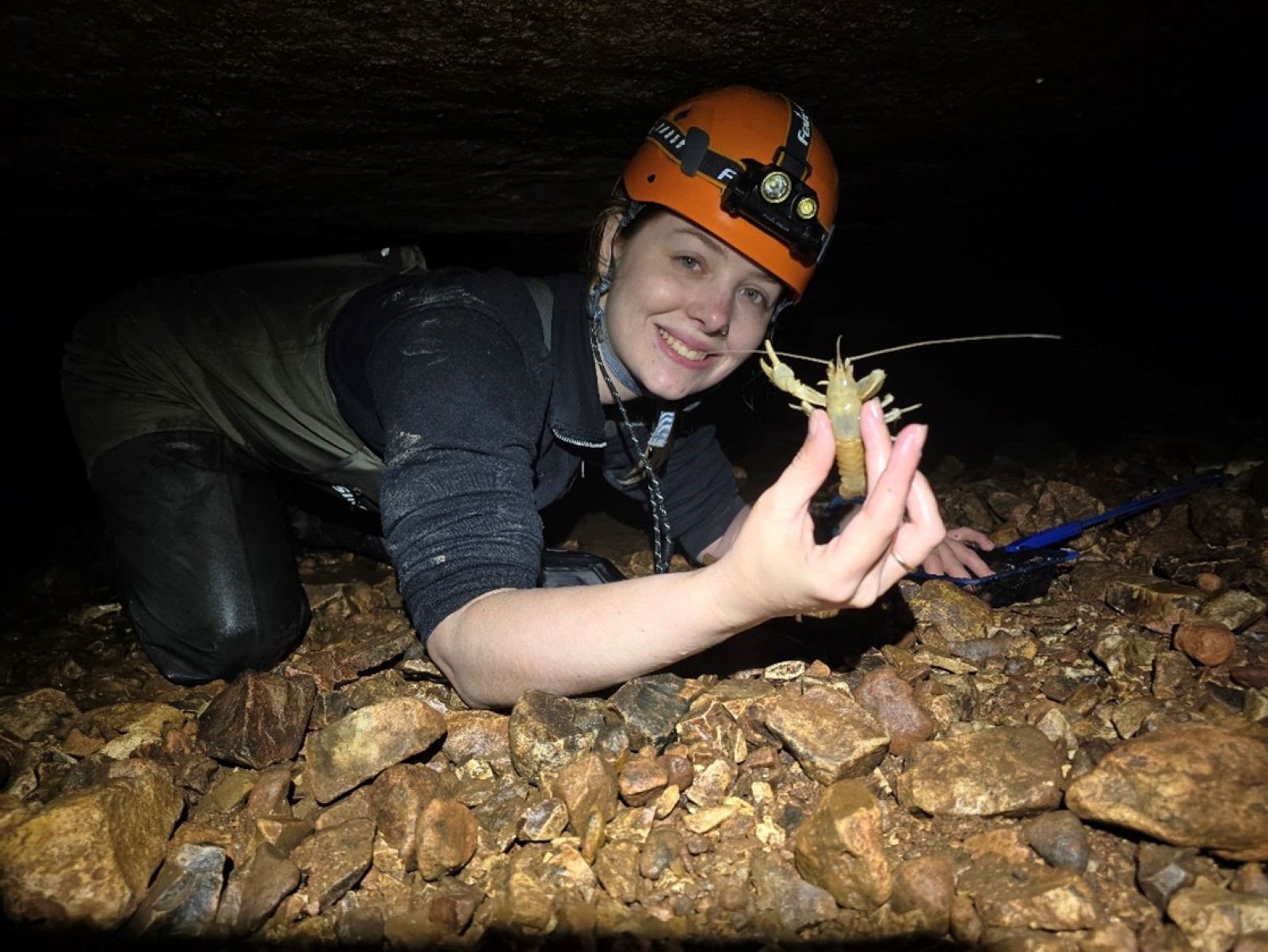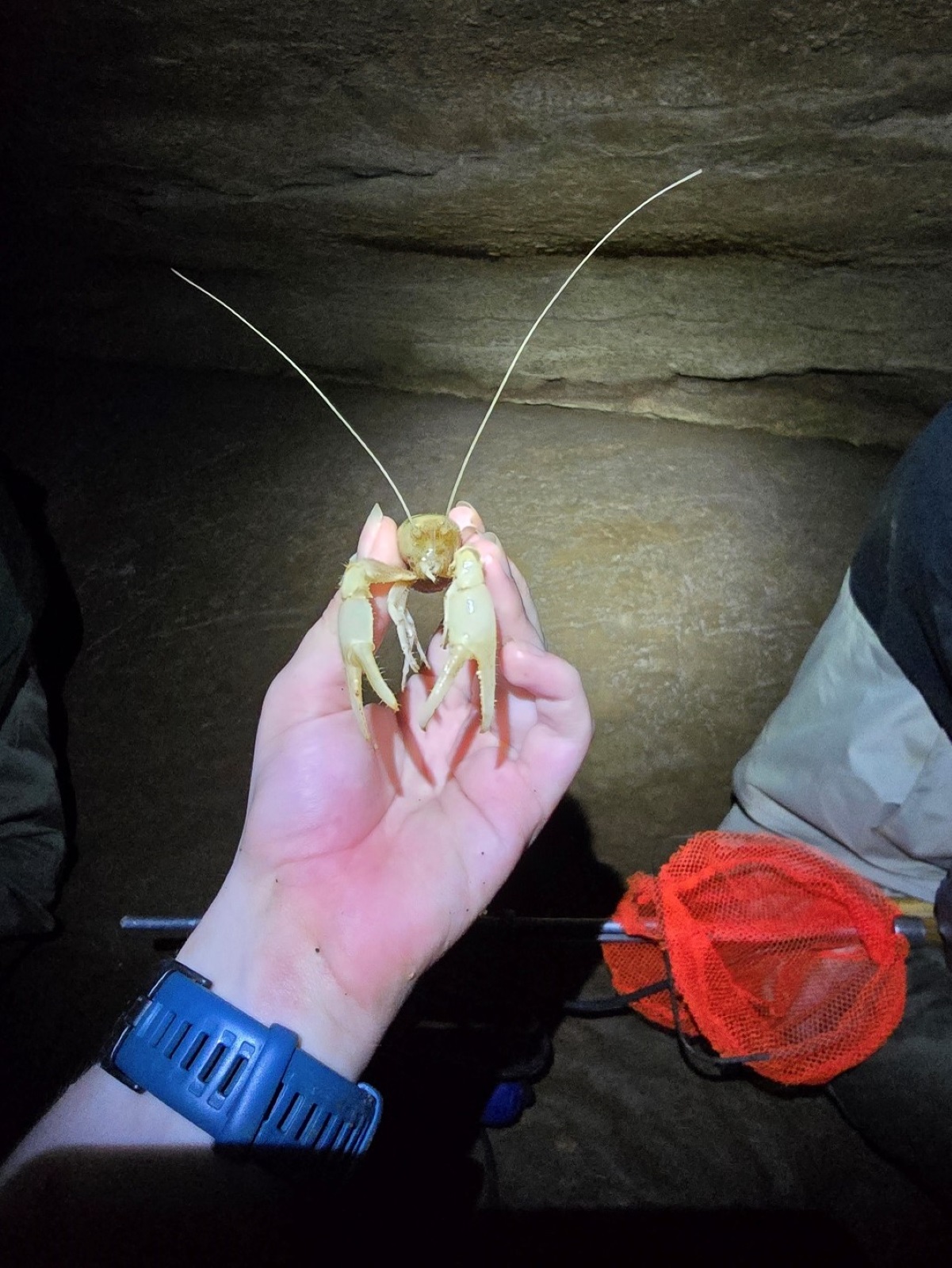When Kevin and Wanetta Bright purchased Smallin Civil War Cave in 2009, they knew it was more than a tourist attraction.
The cave just north of Ozark is also a natural resource that should be researched and protected.
That’s why they allowed biologist Dave Ashley and his students to conduct studies in the cave, including surveys of the bristly cave crayfish that live in the water flowing through the cavern.
The surveys stopped in 2019 when Ashley retired from Missouri Western State University, leaving the Brights in the dark about the health of the crayfish.
After they began noticing silt in the cave’s water, they asked the Missouri Department of Conservation to do a crayfish survey to see if the animals were okay.
“We’re private owners of a resource,” Kevin Bright said. “We want to make sure our resource is taken care of.”

Bailey O’Brian, aquatic ecology assistant with the Missouri Department of Conservation, was a member of the team that conducted the research on May 22.
“A concern observed in Smallin Cave and other Ozark caves is excess sediment and silt,” O’Brian said. “Factors such as soil erosion and land management practices, including clearing and overgrazing in recharge areas, can lead to the introduction of silt into cave systems. Elevated levels of silt in the water can lead to oxygen depletion and pose a threat to organisms that are sensitive to the suspended material.”

Matt Forir, Greene County’s geologist and a consultant for Smallin Civil War Cave, said the turbid water could be a sign that erosion control and sediment barriers at nearby construction sites are failing. If that’s happening, it’s bad news for underground creatures.
Forir said he’s glad the Department of Conservation is conducting research at the cave because the crayfish are an indicator species, which means their presence or absence is an indicator of water quality.
“If you don't constantly monitor your natural resources, your organisms in the cave, both microscopic and macroscopic, you have no idea how they’re doing,” Forir said. “You’ve got to constantly have eyes on that cave.”
Ashley, who has published articles about Smallin Cave in consumer magazines and scientific journals, echoed that sentiment. He hopes MDC continues conducting research in the cave in the future.
Because of the work he did at Smallin Cave in previous years, future researchers can make comparisons of past and present data and understand what’s happening in the cave in ways that can’t be done elsewhere.

Smallin is unique in that it provides an educational opportunity other caves don’t, Ashley said. He doesn’t want to see that disappear.
“Smallin Civil War Cave is the only commercial cave in the Ozarks where a participant of a guided tour, a person coming in off the street, can actually see a bristly cave crayfish,” Ashley said.
O’Brian said the research will tell scientists about more than the crayfish.
“We currently know of three state-listed species of conservation concern that reside in Smallin Cave — bristly cave crayfish, grotto salamander, and tri-colored bat,” O’Brian said. “There have been environmental DNA samples that have suggested that there is an occurrence of the Ozark cavefish, a state endangered and federally listed species, in the cave. Smallin Cave has not been fully explored and there is a possibility of unknown species residing in this cave.”


